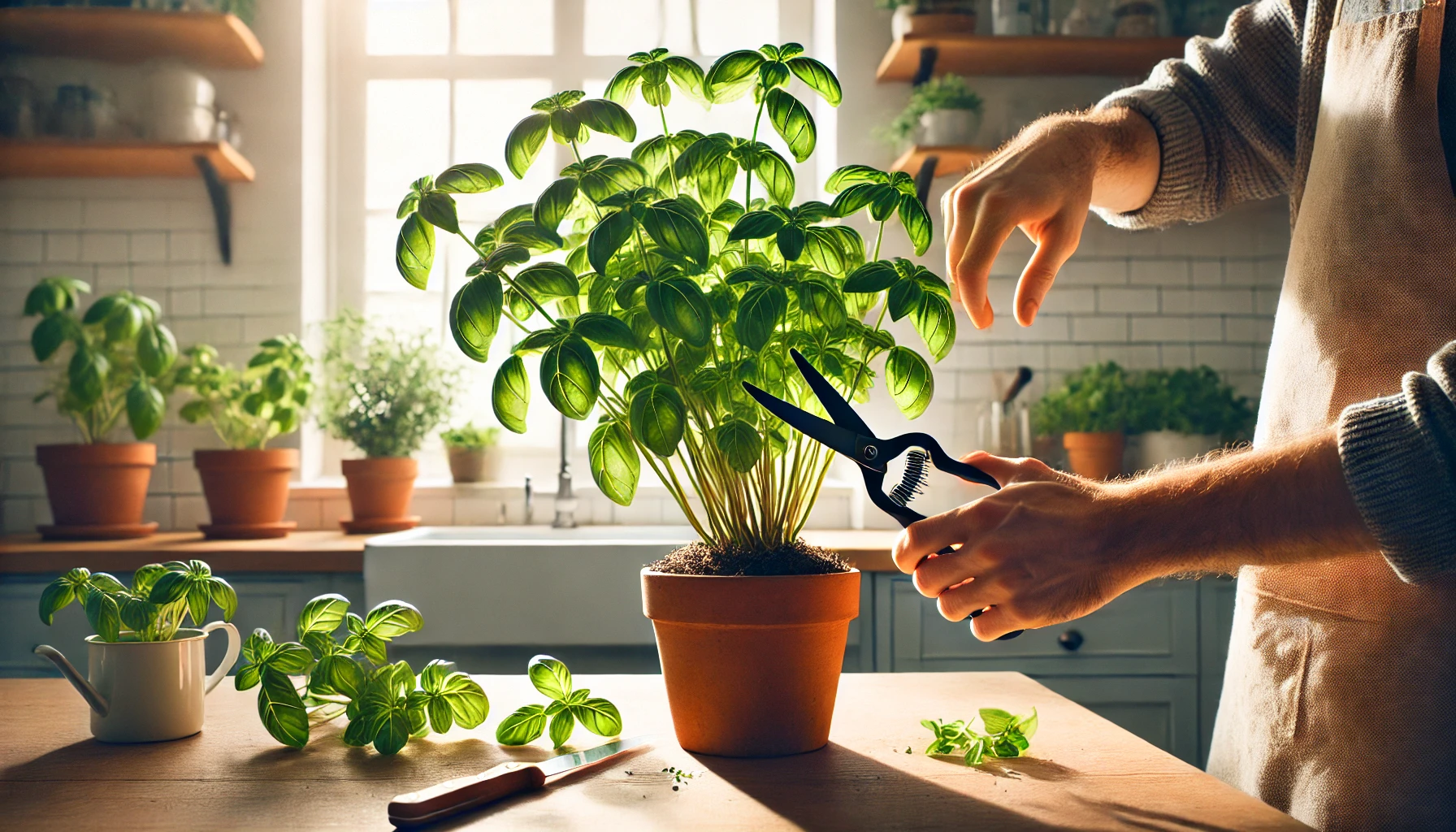Growing potted herbs is a great way to have fresh flavors at your fingertips, but one common issue many gardeners face is leggy growth. Leggy herbs have tall, weak stems with sparse leaves, making them less productive and less visually appealing.
The good news is that with the right care and techniques, you can prevent your herbs from becoming leggy and encourage compact, bushy growth. This guide will explain why herbs become leggy and provide practical solutions to keep them healthy and thriving.
Why Do Potted Herbs Become Leggy?
Herbs become leggy when they stretch toward light or lack proper pruning and care. Here are the main causes of leggy growth:
1. Not Enough Light
- Herbs need at least 6-8 hours of direct sunlight per day.
- If they don’t get enough light, they stretch toward the nearest light source, resulting in tall, weak stems with few leaves.
2. Lack of Pruning
- Regular pruning encourages bushier growth.
- If herbs are left untrimmed, they focus on growing tall rather than producing more leaves.
3. Overcrowding
- When multiple herbs are planted too close together, they compete for light, causing them to stretch upwards.
4. Excessive Fertilizer
- Too much nitrogen leads to fast, weak growth, making stems long and spindly instead of strong and bushy.
5. Poor Watering Practices
- Overwatering or underwatering can stress herbs, causing them to become leggy as they struggle to survive.
Best Strategies to Prevent and Fix Leggy Herbs
1. Provide Enough Light
- Place your herbs in a sunny window, balcony, or outdoor space with at least 6-8 hours of sunlight.
- If growing indoors, use LED grow lights to supplement natural light.
- Rotate pots every few days so the plants grow evenly toward the light source.
2. Prune Regularly for Bushier Growth
- Pinch or trim herbs every 1-2 weeks to prevent them from growing too tall.
- Always cut just above a pair of leaves to encourage branching.
- Remove flower buds immediately to keep the plant focused on leaf production.
How to Prune Specific Herbs:
- Basil & Mint – Cut the top growth just above a leaf pair every week.
- Thyme & Oregano – Trim stems lightly but frequently.
- Rosemary & Sage – Cut back long stems to encourage side growth.
3. Space Your Plants Properly
- Avoid overcrowding by giving each plant enough room to receive light and air circulation.
- If your herbs are too close together, separate them into different pots.
4. Use the Right Soil and Fertilizer
- Choose light, well-draining soil for healthy root development.
- Use balanced fertilizers (such as 10-10-10) but only once every 3-4 weeks.
- Avoid excess nitrogen, which causes excessive stem growth with fewer leaves.
5. Water Herbs Correctly
- Check the soil before watering—stick your finger 1 inch into the soil; if it’s dry, it’s time to water.
- Water at the base of the plant rather than over the leaves.
- Make sure your pots have drainage holes to prevent root rot.
How to Fix Herbs That Have Already Become Leggy
If your herbs are already leggy, you can still restore them to a bushier shape by following these steps:
1. Cut Back Overgrown Stems
- Prune about one-third of the plant at a time.
- Cut above a leaf node to encourage new side shoots.
2. Move the Plant to a Brighter Location
- If indoors, place the pot in a south-facing window or add a grow light.
- If outdoors, gradually expose the herb to more direct sunlight each day.
3. Reduce Fertilizer Use
- Stop using high-nitrogen fertilizers and switch to a balanced or organic fertilizer.
4. Improve Air Circulation
- Space herbs apart so they don’t compete for light.
- Use a small fan indoors to strengthen stems and prevent weak growth.
Best Herbs That Stay Naturally Bushy
Some herbs naturally grow more compact and are less prone to legginess. If you struggle with leggy herbs, consider growing these varieties:
- Greek Basil – Naturally compact and great for small spaces.
- Chives – Grows in clumps with little need for pruning.
- Thyme – Stays low and bushy with proper care.
- Oregano – Develops a nice spread if pruned correctly.
- Parsley – Can become full and leafy with consistent harvesting.
How to Maintain Bushy Herbs Year-Round
1. Keep a Regular Pruning Schedule
- Trim herbs every 1-2 weeks to keep them from growing too tall.
- Even if you don’t need the herbs, prune them anyway to encourage new growth.
2. Rotate Indoor Herbs for Even Light
- Indoor herbs tend to lean toward light sources—rotate them every few days to ensure balanced growth.
3. Grow Herbs in the Right-Sized Pots
- Small pots can restrict root growth, leading to weak, leggy stems.
- Choose 6-12 inch pots depending on the herb type.
4. Use Companion Planting to Provide Support
- Grow thyme or oregano alongside taller herbs to help them stay compact.
- Avoid planting fast-growing herbs (like mint) next to slower-growing ones.
Common Mistakes to Avoid
1. Pruning Too Little or Too Much
- If you never prune, the herb will grow tall and weak.
- If you prune too aggressively, it can stunt growth.
2. Overwatering or Underwatering
- Too much water weakens the roots, leading to floppy stems.
- Too little water stresses the plant, making it stretch to survive.
3. Ignoring Sunlight Requirements
- Keeping herbs in low light without additional grow lights leads to leggy growth.
Conclusion: Keep Your Herbs Compact and Healthy
Preventing leggy herbs is easy with the right approach. By providing enough light, pruning regularly, avoiding overcrowding, and using proper soil and watering techniques, you can grow lush, compact, and productive potted herbs. Whether you’re growing herbs indoors or outdoors, following these tips will ensure that your plants stay full and flavorful all season long.

